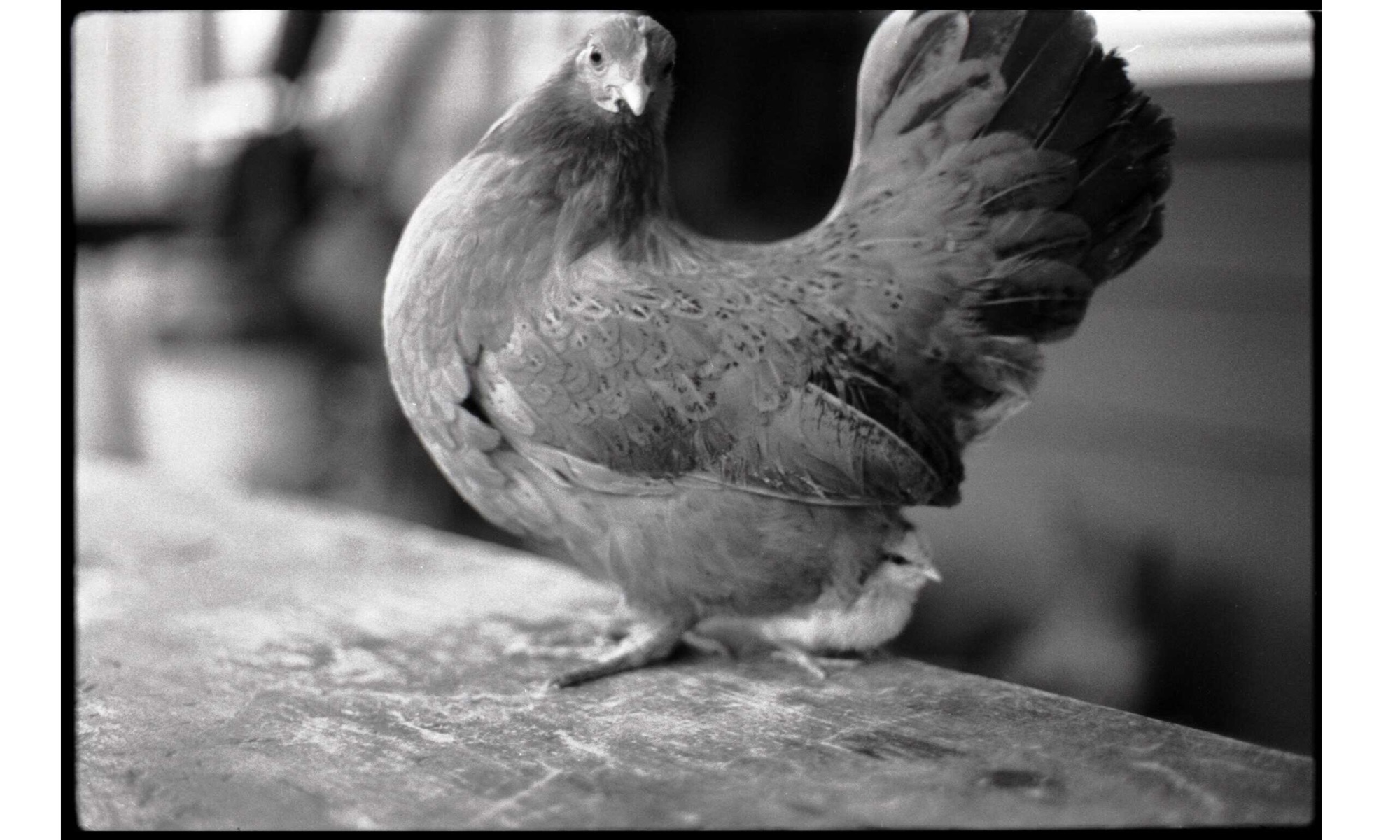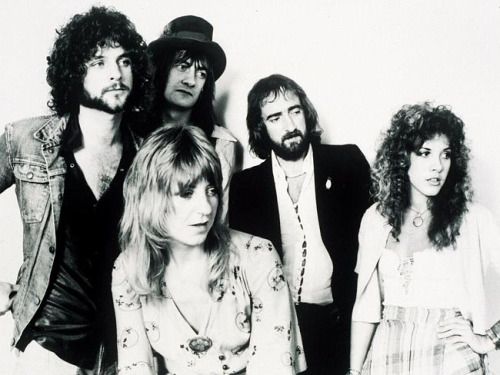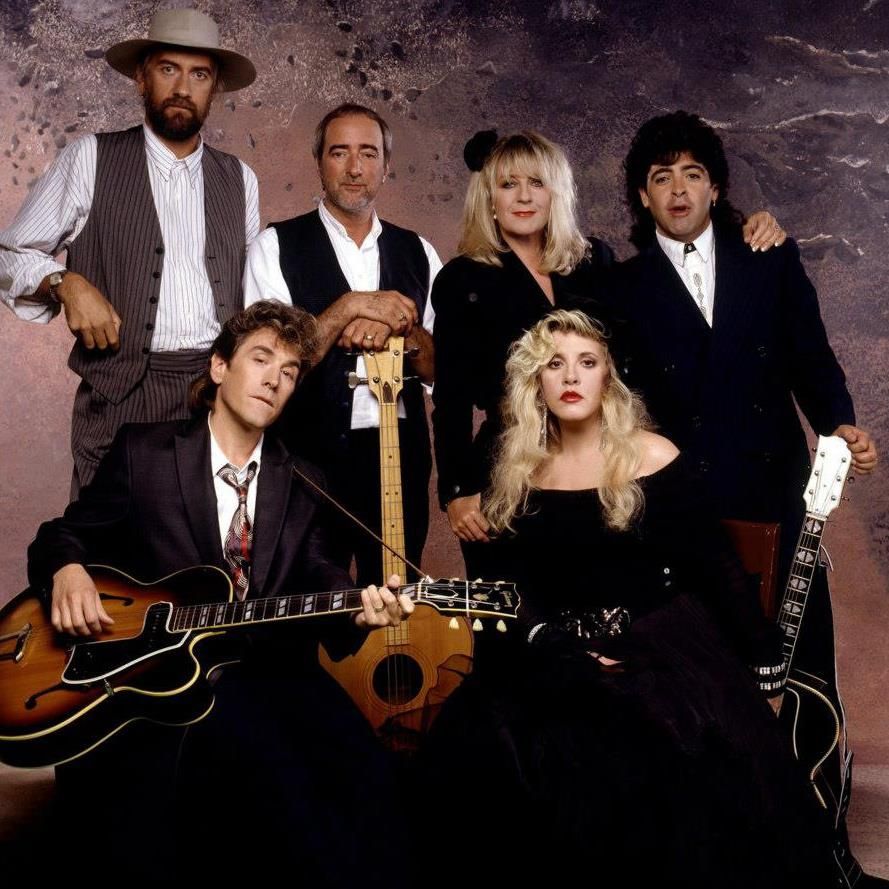As we close in on the Top 10, it’s the last time we’ll see all three of our songwriters appear. One of them is going to be locked out of the Top 10. We’ll also see a surprise appearance of a track from Mystery to Me. And things are certainly going to start getting Christine McVie heavy, as in this case, with three of these five songs coming from her.
#15 – Over My Head (McVie, C.) Fleetwood Mac (1975)
To the band’s surprise, Warner Bros. selected “Over My Head” as the lead single of the newly transformed Fleetwood Mac’a 1975 album, Fleetwood Mac. It was the song the band thought was least likely to be released as a single. The strategy worked, as “Over My Head” became the first single to hit the Billboard Top 100 since “Oh Well” in 1969, which climbed to #55. “Over My Head” was also the band’s first Top 20 single ever, reaching that pinnacle in early 1976.
The song is penned by Christine McVie, and is classic 70’s era McVie through and through. She composed it on a small, portable electric piano, in a tiny apartment in Malibu, CA where she lived with her then-husband, John McVie. While it’s a fairly straightforward, soft-rock, pop song, what makes it so special is the amazing texture in the recording. As a kid, I used to love the novelty of the song already in progress and fading in. Christine’s Vox Continental organ and Lindsey’s low-key, chugging rhythm guitar provide the major drive for the song, with Christine’s electric piano punching accent chords. John McVie’s rolling bass sets the easy rhythm of the tune. Lindsey’s harmonic flourishes and Fleetwood’s unique bongos are the finishing touches to build a rich, palette.
“Over My Head” also features one of my favorite, and to infrequent Mac moments: when Christine and Stevie sing together. Their harmony on the bridge is especially fun in the live version of the song (which I’ve also included – minor point of interest, the live performance features one of the only times I’ve noticed Buckingham using a pick to play guitar). Of Christine’s vocal performance, Billboard magazine said, “a completely distinctive voice, with a sexy huskiness that is unique in pop today.” So true. Lyrically there’s nothing terribly surprising going on here. Christine is lamenting the fact that she’s involved with a man who runs hot and cold, and she can’t decide if it’s worth it to stick around. She is in over her head.
#14 – Don’t Stop (McVie, C.) Rumours (1977)
Possibly one Mac’s most enduring songs, and a great moment of optimism on the otherwise fractious Rumours album, “Don’t Stop” is another Christine McVie-penned tune, and following in the footsteps of Fleetwood Mac’s “World Turning,” is the second in what would become a series, of McVie/Buckingham duets. McVie revealed that Buckingham helped her craft the lyrics in the verses because their personal sensibilities overlapped. Some say the song is Christine’s message to John after their divorce, although usually Christine just talks about it being generally just an song about optimism.
To create the sound for “Don’t Stop,” McVie played the piano part on both a conventional, acoustic piano, and also a specially treated “tack piano,” where nails are placed on the points where the hammers hit the strings, producing a more percussive sound. It’s often used in the honky tonk style of piano playing, and it’s surprisingly effective, giving “Don’t Stop” a decidedly honky-tonk feel. Christine has fun with the piano part throwing in some flashier bits that she rarely does. It also features a nice, melodic lead guitar solo from Buckingham. Lindsey and Christine alternate verses, and share vocal duties on the chorus. Stevie provides back-up vocals during the closing bars. In the live version, all three vocalists sing the choruses in unison. Otherwise, it’s a highly enjoyable, upbeat pop track, with a catch hook.
“Don’t Stop” was the third single from Rumours, following “Go Your Own Way” and “Dreams.” It climbed all the way to #3. The song had a second life when Bill Clinton used it as his Presidential campaign theme song in 1992. Upon winning the election, Clinton persuaded the Rumours lineup of the group to perform the song for his inaugural ball in 1993, the first time they had played live together since 1982.
#13 – Crystal (Nicks) Fleetwood Mac (1975)
Here’s a case of a song ending up much higher on my list than I would have predicted before I started listening to all these songs again to see how I would react. “Crystal” is an interesting anomaly for Fleetwood Mac, as it was written by Nicks, but sung by Buckingham. It was also a previously recorded and released for the Buckingham Nicks album but rerecorded by Fleetwood Mac for this album. American record producer Keith Olsen produced both the Buckingham Nicks and Fleetwood Mac albums, and he insisted both times that Lindsey sing the lead vocal. Stevie would not get to sing the lead part on the song she wrote until she recorded a third version for the original soundtrack to the film Practical Magic in 1998.
I always think of “Crystal” paired with “Landslide,” a more famous Stevie Nicks track. Both use imagery that suggests water, reflections, and light, and deal with deep but ephemeral concepts as time and love. “Crystal” seems to be about how a person experiences love through their lifetime. The lyrics are simple and beautiful, and the line that always resonates with me is, “And I have change, oh but you, you remain ageless.” Such a beautiful line and sentiment. I love the Fleetwood Mac version of this song the best, and Lindsey sings it with such tenderness; perhaps the warmest vocal recorded vocal performance of his career. It’s interesting to note that the Fleetwood Mac version of the song is recorded in a different key than the original, with Lindsey singing even higher in his range. It’s so interesting to hear Stevie’s dreamy lyrics sung by someone else. It really works on this one. Then when Stevie comes in with the harmony vocals, it just soars. They two of them always harmonized gorgeously.
I love the way McVie’s bell-like electric piano weaves into the song around Lindsey’s gentle acoustic guitar work in the first verse. Christine also does a great job with the mellotron, an electro-mechanical musical instrument developed England, in 1963, to really fill out the song, and provide the haunting post-chorus licks, and fading solos at the close of the song. The mellotron has such a lovely, mournful sound and I love the way Christine’s closing solo parts sound like it’s just drifting through mountains on the wind. It’s really a very keyboard heavy song, with the piano and mellotron providing all the layers, and the acoustic guitar adding texture. It’s just exquisite.
#12 – Second Hand News (Buckingham) Rumours (1977)
I feel bad for Lindsey. He really gave so much to Fleetwood Mac, and in some ways was instrumental to their massive success… or at least to their stretching, musically with Tusk and beyond. And yet he doesn’t manage to break into my Top 10, with “Second Hand News” making the highest mark here at #12. His songs are superb, I just like the ones above his better.
“Second Hand News” was always intended to kick-off Rumours. It’s high energy, galloping energy, combined with it’s euphoric kiss-off both jump-started and encapsulated was the album encompassed: the painful dissolution of several relationships that led to an international smash hit. According to Fleetwood Mac biographer Donald Brackett , Buckingham is finding redemption with other women after his failed relationship with Nicks. He sings that although he does not trust his lover and cannot live with her, he cannot live without her as well. “Been down so long, I’ve been tossed around enough. Aw couldn’t you just let me go down and do my stuff?” He just wants to feel good with some lady companions after the ordeal he went through with Nicks.
Buckingham brought an instrumental version of the song to the band early in the process entitled, “Strummer.” (Purportedly he withheld the lyrics to the song as long as possible because he knew Stevie wouldn’t like them.) Buckingham utilized Scottish and Irish folk song influences, and originally the song was to have been set to a march rhythm. Then Buckingham heard the Bee Gees “Jive Talkin'” he wanted to find a more disco groove. In addition, Lindsey added a drum track by pounding on the back of a Naugahyde chair that happened to be in the studio. John McVie originally recorded a flowing, melodic bass part, but while he was on vacation, Buckingham replaced it with a very simple, quarter note bassline. It ultimately worked for the song, and it would herald Buckingham’s eventual totalitarianism in the studio during the Tusk sessions. McVie did rerecord the bass part to Buckingham’s specifications, but added a few flourishes of his own.
I love the galloping rhythm of the opening, and the break-neck speed in which it progresses, aided by Fleetwood’s rolling snare drum. Lindsey’s trademark acoustic flourishes add the texture, and the harmonies supplied by Nicks bring it all together. Christine doesn’t play on the song, but she adds layered, wordless, background vocals that serve the same purpose as her keyboards. In some early concerts, as seen below, Christine McVie played the drum to add additional percussive power as there were no keyboards in the song. In later concerts she added an organ part, that actually seems a little out of place in the song. It’s really a great song and worthy of opening this classic album.
#11 – Just Crazy Love (McVie, C.) Mystery to Me (1973)
Talk about a surprise! I had no idea this song from 1973’s Mystery to Me would almost end up cracking the Top 10! I just love this euphoric, joyful, fun song by Christine McVie. She really doesn’t just let go like this very often, and I love listening to it.
Musically, Christine pounds out some piano, while guitarists Bob Welch and Bob Weston supply some bluesy licks on the verses, and big power chords in the chorus. Then-husband Jon McVie takes a stroll through the melody with his base, all anchored by Fleetwood’s steady, but innovative drumming. And above it all, Christine sings beautifully, clearly having fun with the melody that jumps up an octave and back with lost in between while she just relishes this new relationship she’s in.
There’s not much to the song lyrically. She’s just giddy about a new man, and hopes that it turns serious. Even if her friends tells her she’s being foolish, it just feels right to her, and she’s so happy about it. Apparently Christine performed this song at some of her solo gigs in the early 80’s, and I saw her on that tour, but she didn’t play it in Boston. Can’t find a live video of it anywhere, unfortunately, but here is the audio track!






